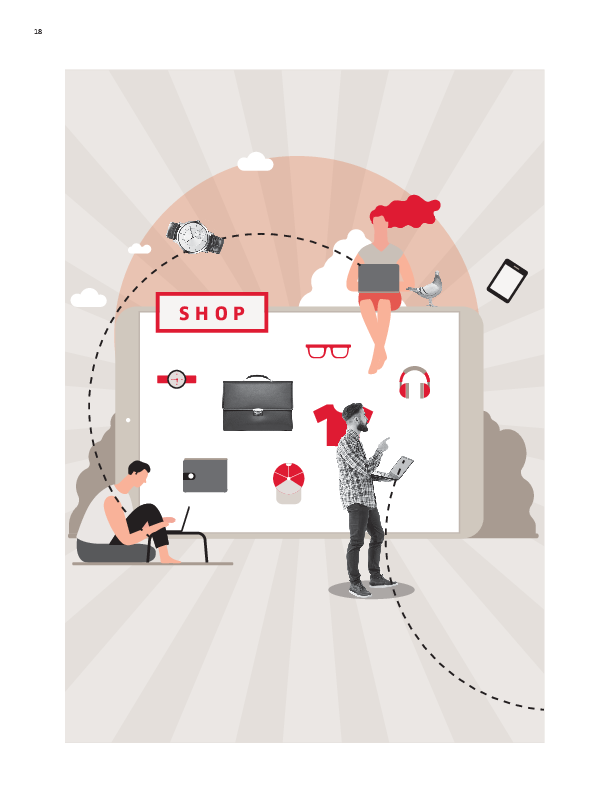 Download
Download
Digitalized Interactive Platforms: Turning Goods and Services into Retail Co-Creation Experiences
Venkat Ramaswamy and Kerimcan Ozcan
With the rise of digital technologies, retailing has become a field of value co-creation. Rather than selling readymade products and services, retailers now offer means for creating value together with their customers through manifold interactions. To enable co-creation, they need to develop digital interactive platforms (DIPs) around retail-related activities. Typically, individuals engage with a retail DIP offering in their particular contexts of interactions with apps or similar components. By delving deeper into the nature of the individual interactions, hidden and untapped sources of value can be revealed. Shoppers get more engaged, and retail managers gain more insights and can design ecosystems that allow a more effective creation of “all-win more” outcomes in more profitable ways. To be successful, retailers need to incorporate a broader view of value creation into their operations. They will be successful with hybrid-delivery systems in which consumers can use a range of interface technologies across multiple channels. Being able to interact with informational content, human actors, and technical resources at different stages of the decision making and shopping process will enable rewarding shopping experiences for customers and retailers alike.
![[Translate to English:] [Translate to English:]](/fileadmin/_processed_/4/3/csm_reinartz_intro_vol_11_no_1_dt_424811060e.png)
![[Translate to English:] [Translate to English:]](/fileadmin/_processed_/e/3/csm_dorotic_vol_11_no_1_dt_5fad28f635.png)
![[Translate to English:] [Translate to English:]](/fileadmin/_processed_/6/a/csm_reinartz_wiegand_vol_11_no_1_dt_dd1f598120.png)
![[Translate to English:] [Translate to English:]](/fileadmin/_processed_/6/e/csm_shankar_vol_11_no_1_dt_ba4c32b686.png)
![[Translate to English:] [Translate to English:]](/fileadmin/_processed_/f/2/csm_linzbach_ea_vol_11_no_1_dt_9dd0213a82.png)
![[Translate to English:] [Translate to English:]](/fileadmin/_processed_/d/f/csm_buder_ea_vol_11_no_1_dt_53d9a1ecba.png)
![[Translate to English:] [Translate to English:]](/fileadmin/_processed_/a/1/csm_2019_nim_mir_future_of_retail_english_ebay_4dfba03c8e.png)


